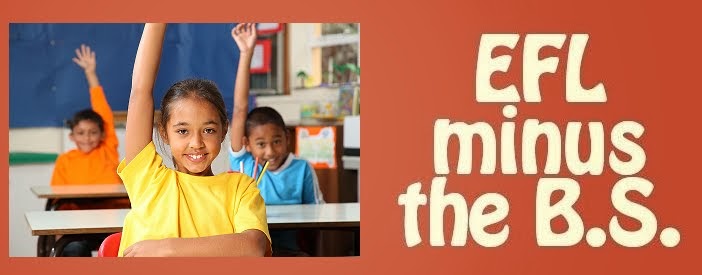CHILDISHNESS RULES, YEAH!
A while
back I was joking around with a young adult class, and one of the students
said, “Gee, Mr Don, you are so childish!”
I was
chuffed, to say the least.
Lashings
of childishness will serve you well in an EFL class. Think about the average
classroom 100 or so years ago. The teacher was God, and his or her every order
was to be followed slavishly. No slacking off. No fooling around. No muttering
to your fellow students. Follow the instructions, or feel the wrath of an irate
teacher descend upon your head. Classrooms are places of serious study, not
jesting, day dreaming, or getting off-task. Such unclassroom-like behavior would
invariably land you a caning, or at the very least an hour’s detention.
So, as
well-meaning as those good teachers of yore were, why not a bit of fooling
around… joking… laughter… silliness? As long as it doesn’t take over the lesson
entirely, what’s the harm? Or more to the point, what are the benefits? There
are plenty in my view.
A student
with a relaxed mind is more receptive to new information, rather than one whose
mind on its best behavior fearful of invoking a teacher’s wrath. Silliness
brightens up a lesson and keeps your students alert and on their toes. The time
seems to pass quicker. Students leave the classroom with smiles on their faces,
looking forward to tomorrow’s lesson. I rest my case.
What kinds
of silliness sit well in the EFL environment? Here are some examples. We all
know the “Stop the Bus” activity. Now if students were required to say “Teacher,
I’ve finished” at the end of each round, the important ingredient of silliness
will have been stripped from the activity. Another example. You’re doing an
activity that requires each student to write a sentence on a piece of paper,
then exchange it with another student who must answer the question. A very
straightforward (and rather predictably boring) reading and writing activity.
So how about this: instead of merely passing the question slip to another
student at random, tell the students to crumple their slips into balls, and to lob
the balls into a box on the floor? When all the balls are in the box, students
pull out one each. The throwing of the paper balls becomes one of the
highlights of the lesson, with students either cheering or jeering each other’s
throwing accuracy. Another: Students are required to perform tasks one by one
in succession. OK, how do we select whose turn it is? The teacher points at the
next student? Nah, you’re passing over a good chance for an injection of
childishness there. Give a student a balloon or a ping pong ball, and tell him
or her to throw it to a student of choice. Fun, laughter, hilarity. Music to my
ears.
I won’t give any more examples; I’m sure you’ve experimented with a few
yourself, and found them very successful. But what I will urge is this. Make
silliness a regular ingredient of your lessons. You won’t be disappointed. And
neither will your students.
xxxxxxxxxxxxxxxxxx
You
won’t find the teaching hints contained in EFL Minus the B.S. in any other
book, journal, or EFL training course. They are the result of my own 40 years
of trial and error (lots of error, plus the occasional EUREKA moment). They’re 100% original, and 95% infallible. Don’t
believe it? Read the book and find out for yourself.

No comments:
Post a Comment